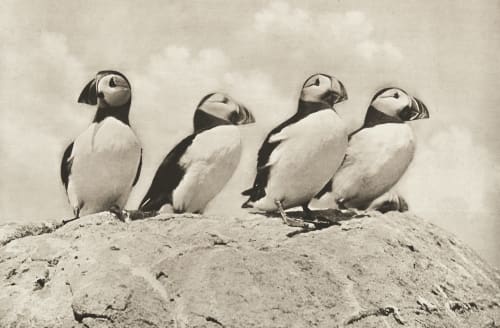
Title
Puffins at HomeArtists
Kearton, Richard (British, 1862-1928)Kearton, Cherry (British, 1871-1940)Publication
Pictures from NatureDate
1905Process
Rotogravure (Rembrandt)Atelier
Rembrandt Intaglio Printing Co.Image Size
19 x 28.5 cmSheet Size
28 x 38 cm
This portfolio contains 15 loose plates well printed in ‘Rembrandt’ photogravure, a rotogravure method invented by Karl Kilć in 1890 and commercialized beginning in 1895. In rotogravure the screened plate is wrapped around a cylinder enabling it to be inked by a machine rather than by hand, thereby greatly increasing the production capacity.
Richard and Cherry Kearton, working in the 1890s, were possibly the world’s first professional wildlife photographers. Starting at home in the village of Thwaite in north Yorkshire with a cheap box camera, they managed to capture some of the finest early pictures of birds in their nests, insects, and mammals. But having no telephoto lenses or fast film, they had to lug around massive plate glass cameras and devise ever more bizarre ways to get close to their shy quarries.
OCLC locates 3 copies.
